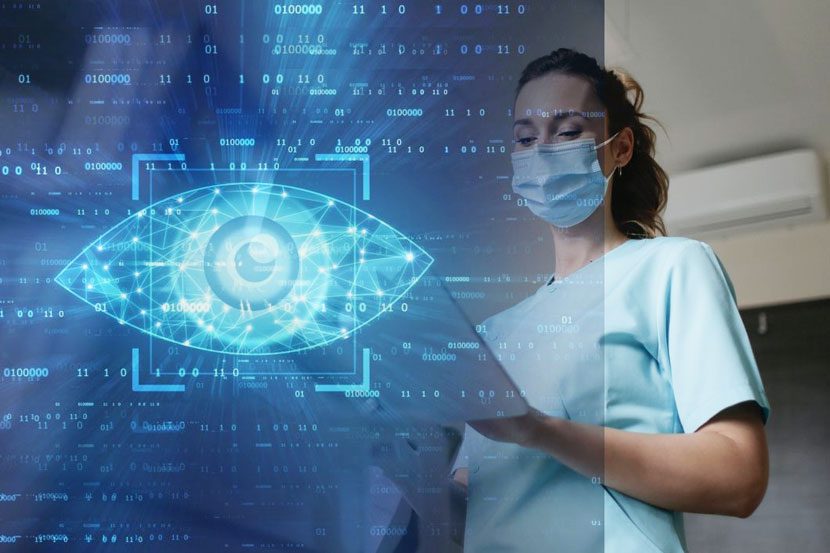How AI and Innovation Are Transforming Eye Care in Low-Income Regions Like Bihar

For years, many parts of India, particularly low-income regions such as Bihar, have faced major challenges in accessing quality healthcare. Eye care has been one of the most neglected areas—limited infrastructure, a shortage of trained ophthalmologists and optometrists, and lack of awareness have kept millions at risk of preventable blindness. Regular eye check-ups and timely treatment, crucial for preserving sight, often remained beyond the reach of rural communities.
Today, this situation is beginning to change. Bihar is witnessing a quiet but powerful transformation, driven by technology and innovation. With the introduction of Artificial Intelligence (AI) in healthcare, eye care delivery is becoming faster, smarter, and more inclusive. Advanced tools and digital platforms are helping bridge the gap between urban and rural healthcare access—ensuring that no one is left behind because of geography or income.
AI in Eye Care: A New Era of Access and Precision
AI has become a transformative force in ophthalmology across India. AI-based eye screening systems can detect common eye diseases such as cataract, diabetic retinopathy, and glaucoma within minutes, often before symptoms appear. By analyzing retinal images with high accuracy, these systems assist eye specialists in early diagnosis and decision-making, improving treatment outcomes.
For a state like Bihar, where the ratio of eye specialists to patients is very low, such technology is a game-changer. It allows community-level health workers to conduct screenings using portable devices, while ophthalmologists can review results remotely. This drastically expands the reach of preventive eye care and ensures timely intervention—even in regions where clinical resources are scarce.
Taking Eye Care to the Heart of Public Spaces
A landmark example of this progress was recently seen during #WorldSightDay, when AI-enabled eye screenings were conducted at major railway stations in Bihar. In partnership with the Ministry of Railways, Government of India, large-scale eye screening camps were held at Patna Junction, Rajendra Nagar Terminal, Hajipur, Patliputra, and Danapur Junction.
These stations became hubs of accessible and technology-driven eye care, where thousands of daily passengers and railway employees received quick eye screenings. AI-generated reports were delivered instantly, ensuring early detection of eye conditions and faster referrals for further diagnosis.
This initiative marked the first large-scale collaboration of its kind in Bihar—a state where people often have to travel long distances for specialized eye treatment. By meeting people where they are, rather than expecting them to reach hospitals, this effort demonstrated how innovation can make preventive healthcare truly inclusive.
Changing the Eye Care Landscape in Low-Income Regions
Eye care in Bihar and other low-income states has historically been reactive—patients sought help only when vision loss became severe. Limited awareness, combined with the cost and distance associated with treatment, led to late diagnoses and higher chances of irreversible blindness.
Now, however, the focus is shifting toward preventive and early detection-based care. With the help of AI technology, community outreach, and awareness programmes, people are being encouraged to undergo routine eye check-ups. Screenings that once required specialized clinics can now be done in local health centers or even in public spaces such as railway stations, schools, or marketplaces.
Such innovations represent a fundamental shift—from treating blindness to preventing it.
Akhand Jyoti Eye Hospital: Leading the Vision Revolution in Bihar
At the forefront of this change is Akhand Jyoti Eye Hospital, one of Bihar’s leading institutions advancing affordable and inclusive eye care. Through its AI-driven “Healthy Eyes” initiative, the hospital is pioneering efforts to integrate technology with community outreach.
By combining AI-based diagnostics with large-scale awareness campaigns, Akhand Jyoti is helping identify and treat eye diseases earlier than ever before. Its collaboration with the Ministry of Railways is a pioneering example of how public-private partnerships can make specialized care accessible to everyone—whether in urban centers or rural hinterlands.
This model of innovation and inclusivity is now inspiring similar initiatives across India, proving that technology-led healthcare can thrive even in low-income regions when driven by purpose and planning.
The Power of AI in Preventive Eye Health
AI-based eye care solutions are not meant to replace doctors—they enhance their capacity. By automating preliminary screenings and diagnostics, AI allows ophthalmologists to focus on treatment and surgery. This combination of human expertise and machine efficiency ensures that every screening counts, especially in areas where trained professionals are few.
Additionally, AI tools improve the accuracy and speed of diagnosis, helping prevent complications. Patients identified with eye conditions through AI screenings can be referred quickly for further tests or surgery, saving valuable time. This early intervention can make the difference between impaired vision and restored sight.
Bridging the Urban–Rural Divide
In India, healthcare has long been concentrated in cities, leaving rural populations underserved. But AI-driven eye screening and tele-ophthalmology are closing this gap. Portable diagnostic devices, cloud-based data sharing, and mobile eye clinics are extending the reach of urban medical expertise to remote districts.
For Bihar—a state where 88% of the population lives in rural areas—this is a major breakthrough. People in villages can now receive accurate eye check-ups, timely diagnosis, and referrals without needing to travel to big cities. It’s a step toward equitable healthcare access and a vision for a future where blindness due to lack of treatment becomes a thing of the past.
Looking Ahead: A Brighter Vision for All
The journey toward universal eye care in Bihar and other low-income regions of India is far from over, but the direction is promising. Technology, collaboration, and innovation are enabling what once seemed impossible—making advanced eye care accessible, affordable, and sustainable.
Efforts led by organizations like Akhand Jyoti Eye Hospital, in partnership with government agencies and powered by AI, are setting a new benchmark for inclusive healthcare delivery. By combining science, empathy, and innovation, these initiatives are ensuring that no one is left behind in the fight against avoidable blindness.
Bihar’s evolving story proves that when technology meets compassion, even the most underserved regions can see a clearer, brighter future.
Read More From Techbullion

Source: How AI and Innovation Are Transforming Eye Care in Low-Income Regions Like Bihar




